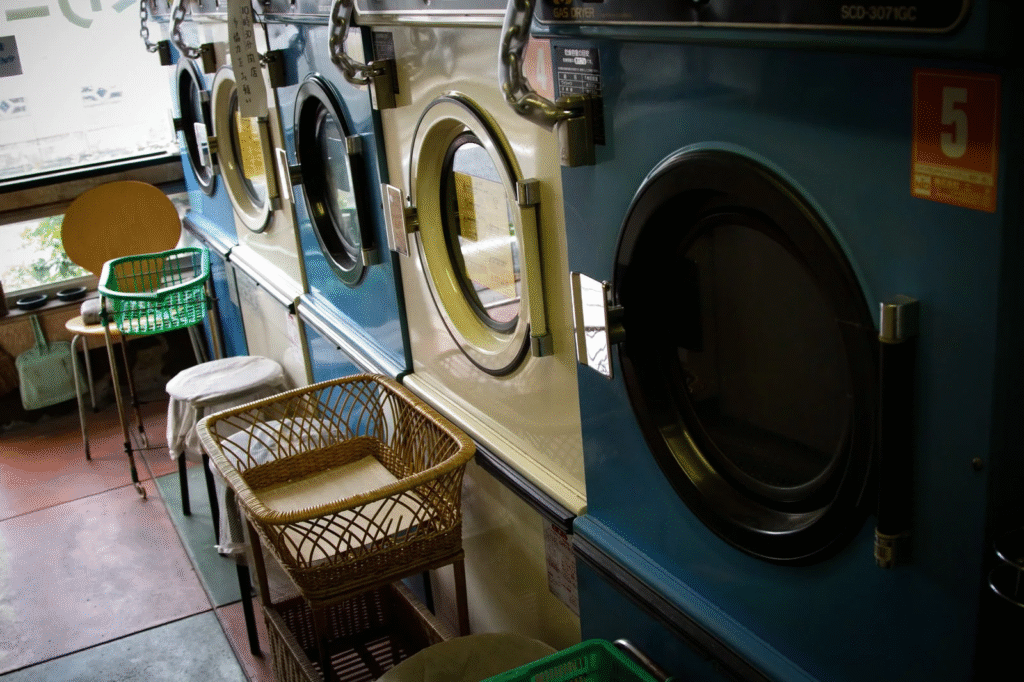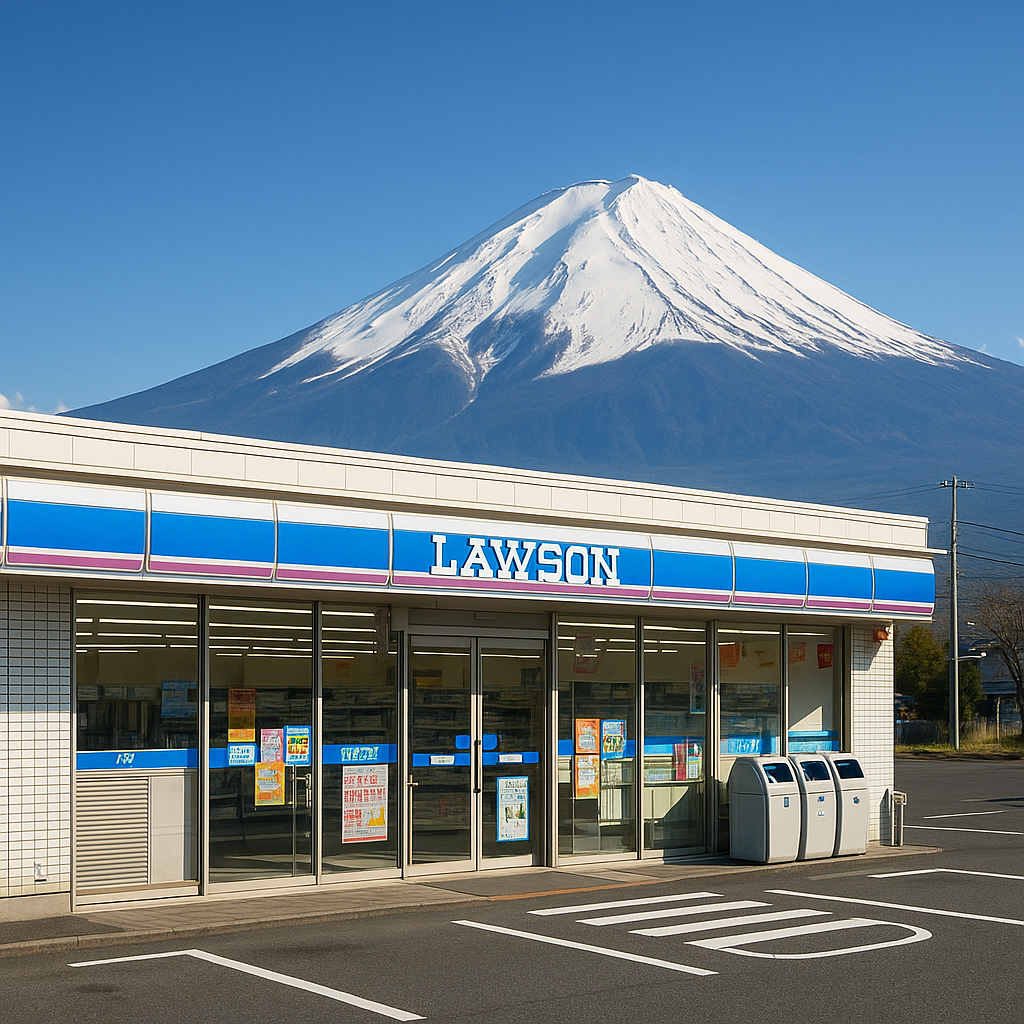Planning your first trip to Japan?
With its beautiful landscapes, unique traditions, and rich culture, Japan is a dream destination for many travelers.
But if you’re visiting for the first time, you might be wondering:
How can I avoid common mistakes? What should I know before I go?
As a local Japanese living near Mt. Fuji, I’ve put together these 10 essential travel tips to help you enjoy your trip smoothly, respectfully, and safely.
Here’s what you need to know before you pack your bags!
Quick Navigation
- 1 ✍️ Introduction
- 2 ✅ Learn Basic Japanese Etiquette and Customs
- 3 🚆Understand Public Transportation (Trains, IC Cards, JR Pass)
- 4 💴Prepare for Cash Culture (Not Everywhere Accepts Cards)
- 5 📶Stay Connected: SIM Cards, Wi-Fi, or eSIM?
- 6 🍣Know the Basics of Japanese Food Culture
- 7 🏨Book Your Accommodation Early (Especially During Peak Seasons)
- 8 ☀️Pack Smart for Japan’s Weather and Seasons
- 9 🛂Don’t Forget Your Passport (You’ll Need It for Tax-Free Shopping!)
- 10 🎌Learn a Few Simple Japanese Phrases
- 11 🌿Slow Down and Enjoy Local Life (Beyond the Tourist Spots)
- 12 🎉 Conclusion: Ready for Your Japan Trip?
✍️ Introduction
Visiting Japan for the first time?
You’re in for a treat — breathtaking landscapes, rich traditions, delicious food, and some of the kindest people you’ll ever meet.
But Japan is also a place with unique customs and systems that might be quite different from your home country.
As a local Japanese living near Mt. Fuji, I’ve seen many travelers struggle with things that could easily be avoided — simply by knowing a few tips in advance.
So here are 10 essential Japan travel tips to help you have a smooth, respectful, and truly enjoyable experience. Let’s dive in!
✅ Learn Basic Japanese Etiquette and Customs
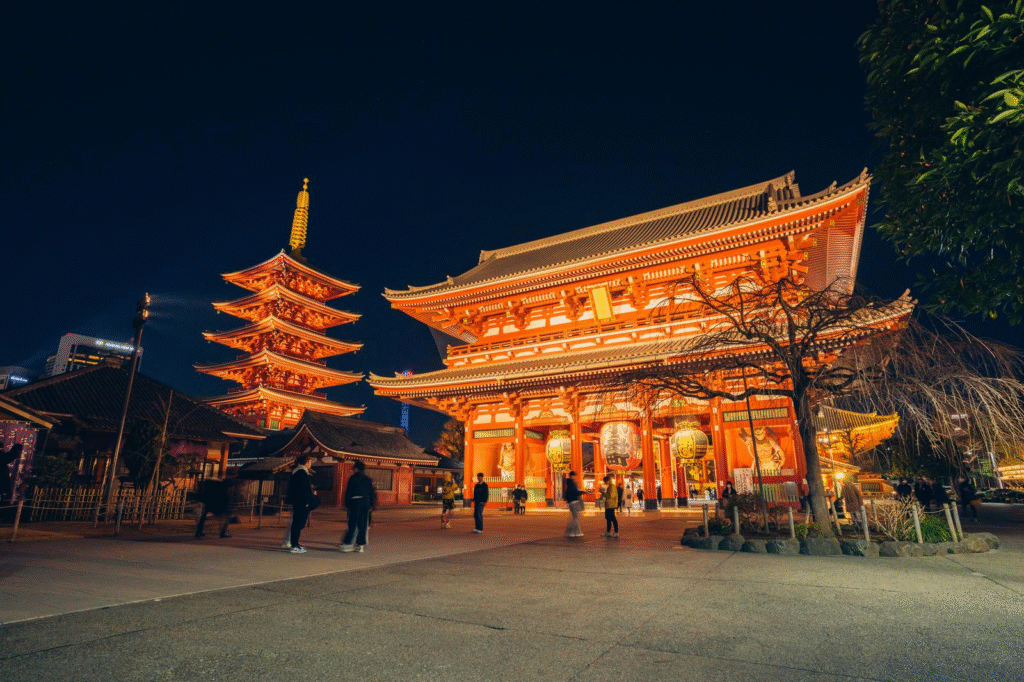
Japan is a country where etiquette really matters — not just in formal situations, but in everyday life too. Understanding a few basic rules can go a long way in making your trip more pleasant and respectful.
🎎 Important Etiquette to Remember:
- Bowing instead of handshakes:
A simple bow is the most common greeting. No need for deep bows — just a polite nod shows respect. - Take off your shoes indoors:
In homes, traditional inns (ryokan), temples, and sometimes even restaurants, you’ll be asked to remove your shoes. Look for a sign or slippers provided at the entrance. - Be quiet on public transport:
Talking loudly on trains or buses is considered rude. Put your phone on silent mode and avoid phone calls. - Don’t eat while walking (in most places):
It’s generally considered bad manners to walk and eat at the same time, especially in cities. Finish your snack before moving on. - Queue patiently:
Whether you’re waiting for a train or ordering food, form a line and wait your turn — Japanese people take this seriously!
Taking a few minutes to understand these customs will show respect for local culture — and locals will really appreciate your efforts.
➡️ Want to know more? Check out my full guide on [“Mastering Japanese Etiquette: Essential Manners for Respectful Travelers”]
🚆Understand Public Transportation (Trains, IC Cards, JR Pass)

Japan’s public transportation system is one of the best in the world — clean, safe, and usually on time. But if it’s your first visit, figuring out how to get around might feel a little confusing at first.
Here’s what you need to know to travel smoothly:
🚉 Train Travel Made Easy
Local trains, express trains, and bullet trains (Shinkansen):
Japan has several types of trains, and knowing which one to take can save you time and money.
→ Local trains stop at every station, while express and limited express skip some stops.
→ The Shinkansen is the fastest way to travel long distances (like Tokyo to Kyoto).
💳 IC Cards: Suica, PASMO, ICOCA, and More
IC cards are prepaid smart cards that you can use for trains, buses, and even some vending machines or convenience stores.
The most common cards:
Suica (JR East), PASMO (Tokyo area), ICOCA (Kansai area)
You can buy one at major train stations and easily recharge it at machines or convenience stores.
Tip:
You can use the same IC card in most major cities across Japan — no need to get a new one for each region!
🚄 Is the JR Pass Worth It?
The Japan Rail Pass (JR Pass) is a special discounted train pass for tourists, allowing unlimited travel on JR trains for a set number of days.
When the JR Pass is a good deal:
If you plan to travel long distances (for example: Tokyo → Kyoto → Osaka → Hiroshima)
If you’ll be using the Shinkansen several times during your trip
When it’s NOT worth it:
If you’re staying mostly in one area like Tokyo or Kyoto with short local trips
In that case, buying tickets as you go or using an IC card is usually cheaper.
(I will cover the JR Pass in more detail in a separate post — stay tuned!)
🧭 Helpful Apps for Getting Around
Google Maps (surprisingly accurate for Japanese train schedules!)
Japan Travel by NAVITIME (great for detailed routes and train info)
Hyperdia (train route search, though now limited in some functions)
Understanding these basics will save you time, money, and confusion — so you can spend more of your trip enjoying Japan and less time figuring out the next train!
➡️ Want to know more? Check out my full guide on 【How to Use Public Transportation in Japan: Simple Tips for First-Time Visitors】
💴Prepare for Cash Culture (Not Everywhere Accepts Cards)
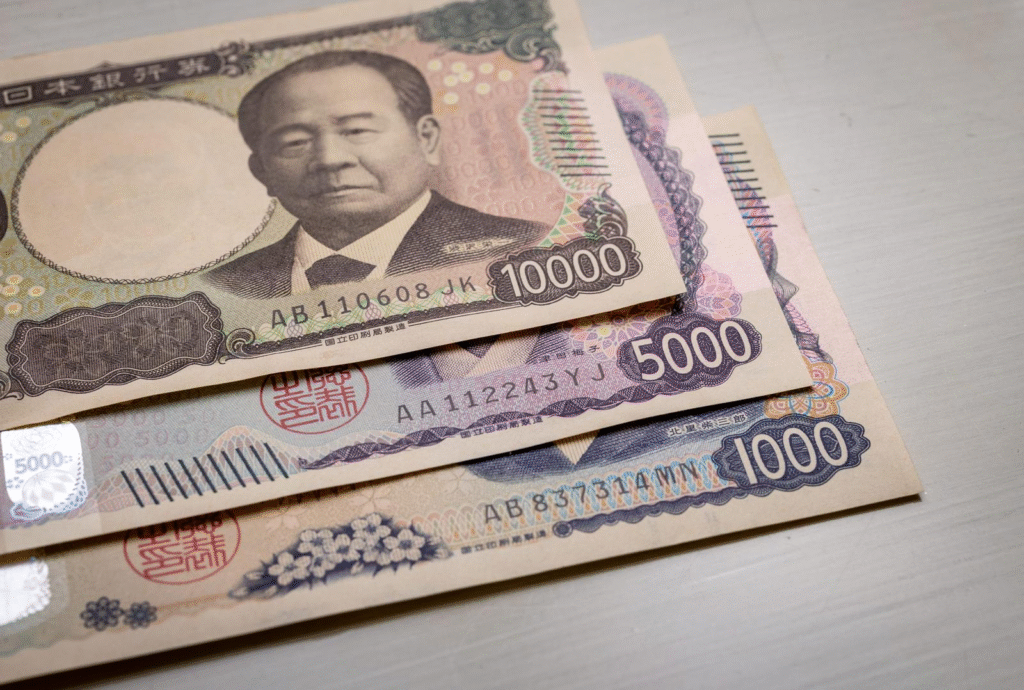
Japan is often seen as a high-tech country — but when it comes to daily payments, cash is still king in many places.
While credit cards are becoming more common, especially in big cities, there are still many situations where cash is the only option.
Here’s what you need to know about handling money in Japan:
🏪 When You’ll Need Cash
- Small local restaurants and ramen shops 🍜
- Rural areas, temples, and shrines 🏯
- Small souvenir shops or farmers’ markets
- Some guesthouses, ryokan (traditional inns), or minshuku
Tip:
Always keep some cash with you, especially if you’re traveling outside major cities.
🏧 Where to Get Cash (ATMs That Work With Foreign Cards)
Not all ATMs in Japan accept foreign debit or credit cards. But here’s where you can safely withdraw Japanese yen:
- 7-Eleven ATMs — Available 24 hours, accept most international cards
- Japan Post ATMs — Found at post offices across the country
- Lawson ATMs — Many also accept foreign cards
💡 ATM Tip:
Look for the “International ATM” mark or logos of your card company (Visa, Mastercard, etc.) before inserting your card.
💳 Can I Use Credit Cards or Contactless Payments?
- Visa and Mastercard are widely accepted in big cities, hotels, major stores, and chain restaurants
- AMEX and Discover may have limited acceptance
- Apple Pay / Google Pay / Contactless cards (IC-enabled) → Some places accept them, but not everywhere
In smaller towns or at local spots (like many near Mt. Fuji!), it’s safer to assume cash only.
🪙 How Much Cash Should You Carry?
- ¥10,000–¥20,000 (around $70–$140) is usually enough for daily expenses
- No need to carry too much, Japan is very safe — but always keep your money secure
By preparing some cash in advance, you can avoid those awkward “sorry, cash only” moments — and enjoy your trip with peace of mind.
📶Stay Connected: SIM Cards, Wi-Fi, or eSIM?
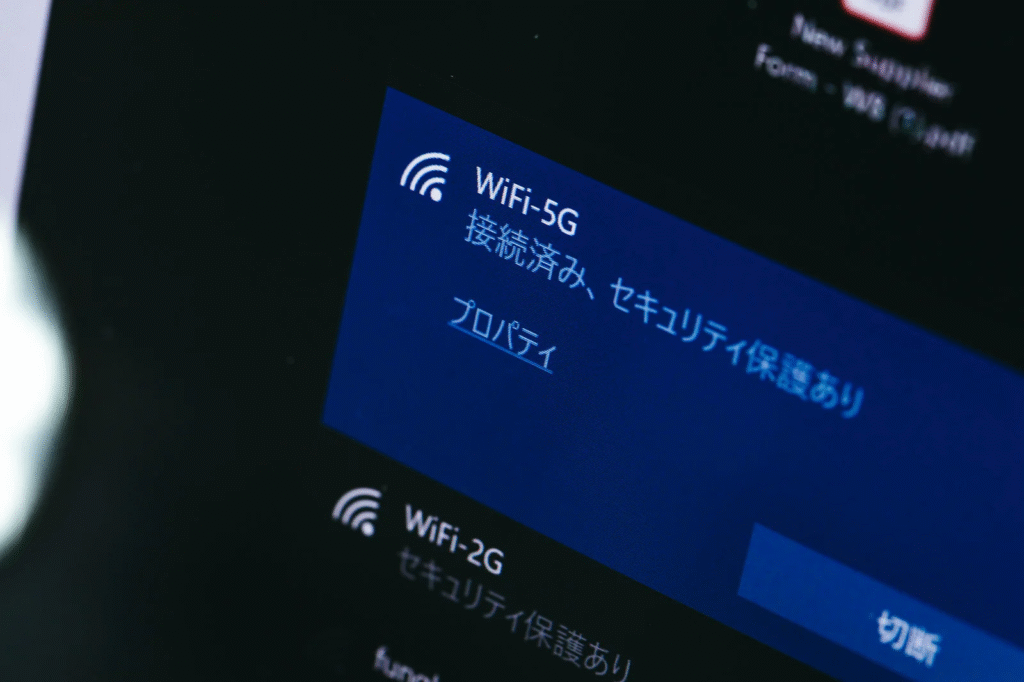
Staying connected while traveling in Japan is super helpful — not just for posting your beautiful Mt. Fuji photos, but also for navigating trains, using translation apps, and finding local spots.
Here’s a simple guide to your best options for staying online during your trip:
📱 Option 1: SIM Card for Tourists
- Prepaid SIM cards with data-only plans are available at airports, electronics stores, or online.
- Popular providers:
Sakura Mobile, Mobal, IIJmio, BicCamera SIM
Pros:
✅ Reliable connection with your phone directly
✅ Good for longer stays
Cons:
❌ Requires an unlocked phone
❌ Sometimes setup can be tricky if you’re not tech-savvy
📡 Option 2: Pocket Wi-Fi (Portable Wi-Fi Router)
- Small device that you can rent at the airport or have delivered to your hotel.
- Connects multiple devices at once — great for couples or groups!
Pros:
✅ Easy to use
✅ Good battery life
✅ Share connection with friends/family
Cons:
❌ Need to carry the device with you
❌ Battery needs charging
🌐 Option 3: eSIM (Digital SIM Card)
- More and more travelers are using eSIM — a digital SIM you can set up before arrival or instantly after landing.
- No physical SIM card needed!
Popular eSIM providers:
- Airalo
- Ubigi
- Nomad
Pros:
✅ Instant setup, no physical SIM swapping
✅ Perfect if your phone supports eSIM
✅ Great for short trips
Cons:
❌ Only works on eSIM-compatible phones (check before you go!)
✈️ Which Option Is Best for You?
| Option | Best For |
|---|---|
| SIM Card | Solo travelers, longer stays |
| Pocket Wi-Fi | Groups, families, heavy data use |
| eSIM | Short stays, tech-friendly users |
🧭 Pro Tip: Free Wi-Fi in Japan?
While you can find free Wi-Fi at many convenience stores (7-Eleven, Lawson, FamilyMart), airports, and some train stations,
Japan’s free Wi-Fi coverage is still limited compared to many Western countries.
In rural areas, or even at small local cafes and shops, free Wi-Fi may not be available at all.
Sometimes the free Wi-Fi requires registration, and the connection can be unstable.
➡️ For reliable internet access, it’s better to prepare your own SIM, pocket Wi-Fi, or eSIM before your trip.
🍣Know the Basics of Japanese Food Culture

Japanese food is not only delicious — it’s also deeply connected to the culture and traditions of daily life.
But if it’s your first time in Japan, the dining style, manners, and what to expect at restaurants might feel a bit different.
Here are some tips to help you enjoy Japanese meals like a local:
🥢 No Tipping Required (It’s Not Expected!)
In Japan, tipping is not part of the culture.
Leaving extra money on the table might even confuse the staff.
Instead, simply saying “Arigatou gozaimasu” (Thank you very much) with a smile is the best way to show your appreciation.
🍜 How to Order at Restaurants
- Many restaurants have plastic food displays (食品サンプル) outside the shop — great for pointing if you don’t speak Japanese!
- Some places offer English menus, but not always.
- Ticket machines are common in ramen shops and casual eateries.
→ Insert cash, press the button for your dish, and hand the ticket to the staff.
🍶 Phrases That Might Help:
- Sumimasen! (Excuse me!) → Use this to get the waiter’s attention.
- Osusume wa nan desu ka? (What do you recommend?)
- Mizu kudasai. (Water, please.)
- Itadakimasu! (Said before eating, to show gratitude for the food.)
- Gochisousama deshita! (Said after finishing your meal — “Thank you for the meal!”)
🏮 Types of Dining Places You Might Encounter:
| Type | What to Expect |
|---|---|
| Izakaya | Casual Japanese-style pub (shared plates, drinks) |
| Ramen shops | Often use ticket machines, quick dining |
| Sushi restaurants | Counter seating, sometimes conveyor belt (kaitenzushi) |
| Ryokan dining | Traditional multi-course meals (kaiseki) |
| Convenience stores | Surprisingly good quality for quick meals or snacks |
🧭 Vegetarian / Vegan Note:
Many dishes in Japan include fish-based broth (dashi), even if they don’t look like seafood.
If you have dietary restrictions, learn a few key phrases or look for restaurants that specifically mention vegetarian or vegan options.
💡 Enjoy Eating Slowly and Respectfully
Japanese dining culture values quiet enjoyment and respect for the meal.
Try not to rush — take your time, appreciate the flavors, and enjoy the experience.
(I will also write a detailed guide on “What to Eat Around Mt. Fuji” — stay tuned!)
➡️ Want to know more? Check out my full guide on
【 “What to Eat in Japan: A Beginner’s Guide to Must-Try Japanese Food” 】
🏨Book Your Accommodation Early (Especially During Peak Seasons)

Japan offers a wide range of accommodation options — from modern hotels and budget hostels to traditional ryokan and cozy guesthouses.
But depending on the season and location, places can fill up quickly — sometimes months in advance.
Here’s what you should know to avoid last-minute stress:
📅 When to Book Early
Some times of the year are especially busy for travel in Japan. If your trip overlaps with these seasons, book your hotels or ryokan as early as possible:
| Season/Period | Why It’s Busy |
|---|---|
| 🌸 Cherry Blossom Season (Late March–Early April) | One of the most popular times for both tourists and locals |
| 🇯🇵 Golden Week (Late April–Early May) | Major national holidays — domestic travel peak |
| 🎇 Summer Festivals (July–August) | Fireworks festivals and school vacations boost demand |
| 🍁 Autumn Leaves Season (November) | Many people travel to see the beautiful fall colors |
| 🎍 New Year Holidays (End of December–Early January) | Families visit hometowns and temples, many places close |
🏡 Types of Accommodation to Consider
| Type | What to Expect |
|---|---|
| Hotel | Modern, convenient, English-speaking staff likely |
| Ryokan | Traditional Japanese inn, tatami rooms, futon bedding, onsen (hot springs) |
| Minshuku | Family-run guesthouse, homey and affordable |
| Capsule Hotel | Unique experience, compact pods, budget-friendly |
| Hostel / Guesthouse | Great for solo travelers or meeting other visitors |
💡 Pro Tips for Booking:
- Check cancellation policies carefully.
Some ryokan or small guesthouses may have stricter cancellation rules. - Consider booking directly through the accommodation’s official website.
Sometimes they offer better rates or extra perks (like free breakfast or onsen access). - Don’t forget to check location carefully on the map!
Especially in rural areas, “near Mt. Fuji” can mean very different distances.
Booking your stay in advance, especially during busy seasons, ensures that you’ll get the type of accommodation and location you really want — so you can relax and focus on enjoying your trip.
☀️Pack Smart for Japan’s Weather and Seasons
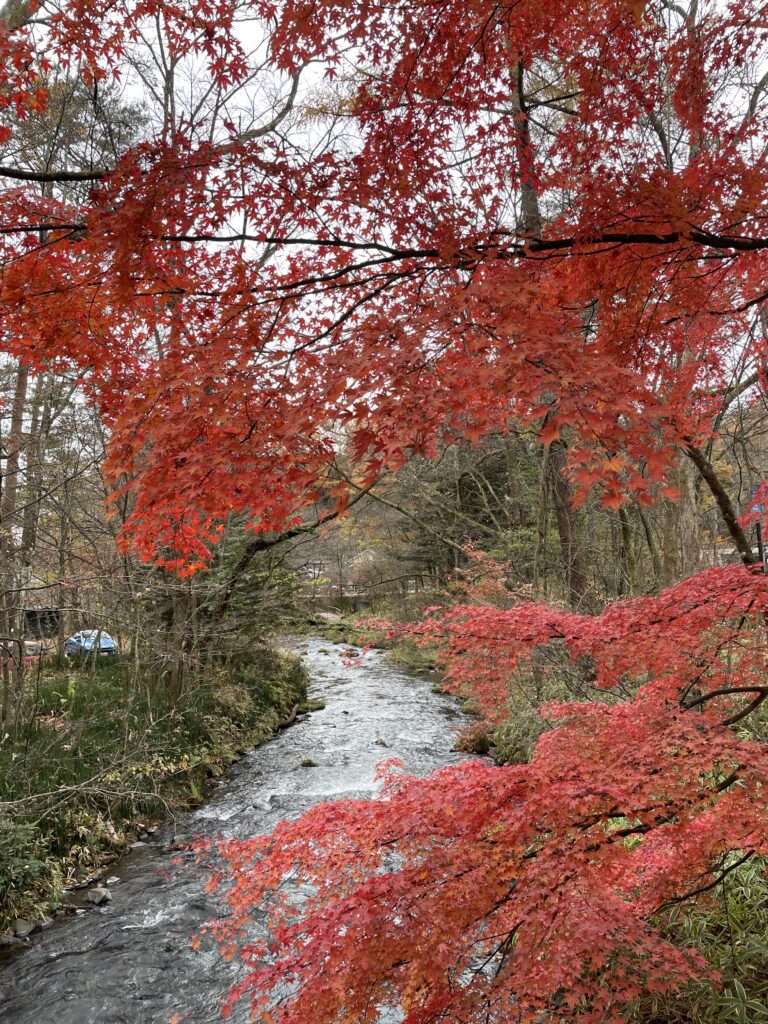
Japan has four distinct seasons, and the weather can vary a lot depending on the time of year and the region you visit.
Packing the right clothes and essentials will help you stay comfortable — and enjoy your trip no matter the season.
Here’s what you need to know:
🌸 Spring (March to May)
- 🌡️ Temperatures: 10°C to 20°C (50°F to 68°F)
- 🧥 Pack a light jacket or sweater, as mornings and evenings can still be chilly.
- ☔ Cherry blossom season → Occasional rain, so an umbrella or rain jacket is useful.
☀️ Summer (June to August)
- 🌡️ Hot and humid, 25°C to 35°C (77°F to 95°F)
- 🩳 Lightweight, breathable clothes (cotton, linen)
- ☔ June is rainy season (tsuyu) → bring a foldable umbrella
- 🧴 Don’t forget sunblock, hat, and hydration — Japanese summers can be intense!
- 🎇 Many festivals happen in summer — bring casual yukata if you want to join the local vibe!
🍁 Autumn (September to November)
- 🌡️ Cool and comfortable: 10°C to 25°C (50°F to 77°F)
- 🧥 Light jacket or sweater for cooler evenings
- 🍂 Great season for outdoor activities and autumn leaves viewing
❄️ Winter (December to February)
- 🌡️ Cold, especially in northern regions and mountain areas: 0°C to 10°C (32°F to 50°F)
- 🧤 Bring a warm coat, scarf, gloves, and thermal layers
- ⛄ Even in Tokyo and Kyoto, it can get pretty cold in the mornings and at night
- 🎿 If heading to ski resorts like Hokkaido or Nagano → proper snow gear needed
☁️ General Packing Tips
- 🎒 Foldable umbrella: Many Japanese carry them daily, especially during rainy season.
- 👟 Comfortable walking shoes: You’ll likely walk a lot, especially when exploring cities or visiting temples.
- 💊 Medications: Bring your own, as finding specific brands in Japan may be difficult.
- 🪥 Toiletries: Most hotels provide basic amenities, but it’s good to carry your own if you have preferences.
Packing smart for the season will help you stay comfortable and ready for whatever Japan’s weather brings — whether it’s spring flowers, summer festivals, autumn colors, or snowy landscapes.
🏔️ Want to see what each season looks like around Mt. Fuji?
Check out my guide to Mount Fuji through the Four Seasons
and discover the best times to visit for cherry blossoms, autumn colors, and snowy views!
🛂Don’t Forget Your Passport (You’ll Need It for Tax-Free Shopping!)
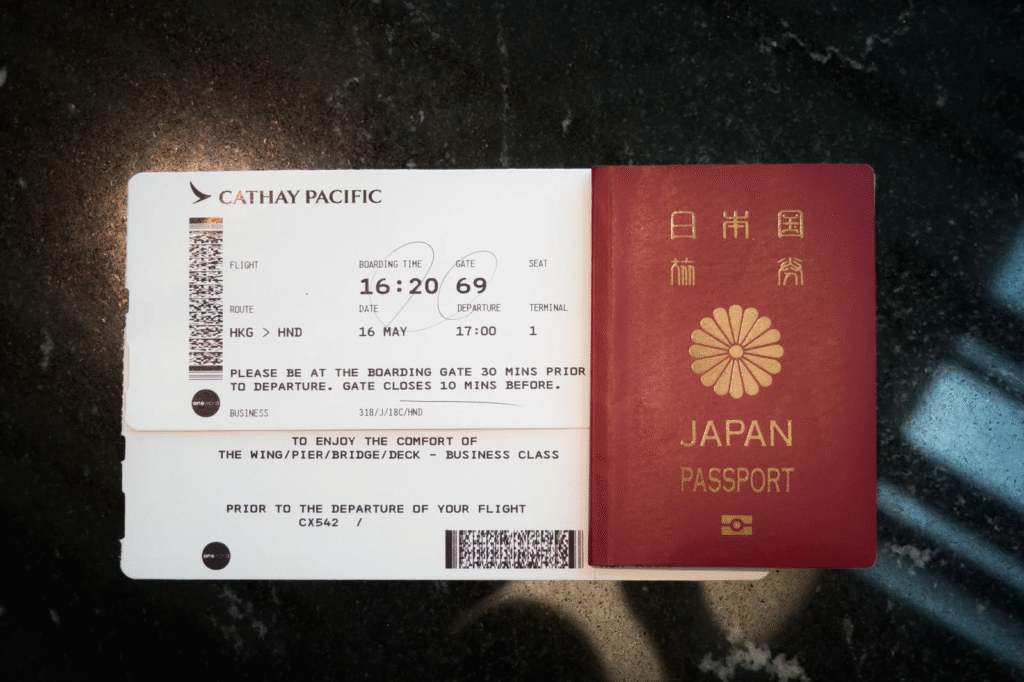
Your passport is more than just your travel document in Japan — you’ll need it for tax-free shopping, hotel check-ins, and sometimes even for ID verification.
Here’s why it’s important to always keep your passport with you while traveling in Japan:
🛍️ Tax-Free Shopping: Save 10% on Purchases!
- Foreign tourists can enjoy tax-free shopping at many major stores, electronics shops, and department stores.
- The 10% consumption tax is waived if:
- You are a non-resident tourist
- You show your passport at the time of purchase
- You spend over a certain amount (usually ¥5,000+ at one shop)
Look for the “Tax-Free” sign at stores — and don’t forget to show your passport before paying.
🏨 Hotels and Accommodations May Ask for Your Passport
- By law, hotels and guesthouses in Japan are required to check the passports of foreign guests.
- Even if you’ve booked online, many places will ask to see your passport at check-in.
- Some accommodations will make a photocopy (this is standard practice).
🧳 Do You Need to Carry Your Passport All the Time?
Yes — by law, foreign visitors are required to carry their passport while in Japan.
While random ID checks are rare, especially outside big cities, it’s safest (and required) to keep your passport with you.
💡 Pro Tip:
- Use a secure travel pouch or money belt to keep your passport safe.
- Carry a digital photo or copy of your passport on your phone as backup — but remember, the original is required for tax-free shopping and ID checks.
💼 What About Residence Cards (Zairyu Card)?
- If you’re a resident of Japan (long-term stay), your Zairyu Card (residence card) is your legal ID.
- But for short-term tourists, the passport is your official identification.
Keeping your passport handy means no surprises when shopping or checking in to your hotel — and lets you enjoy those tax-free perks without hassle.
🎌Learn a Few Simple Japanese Phrases
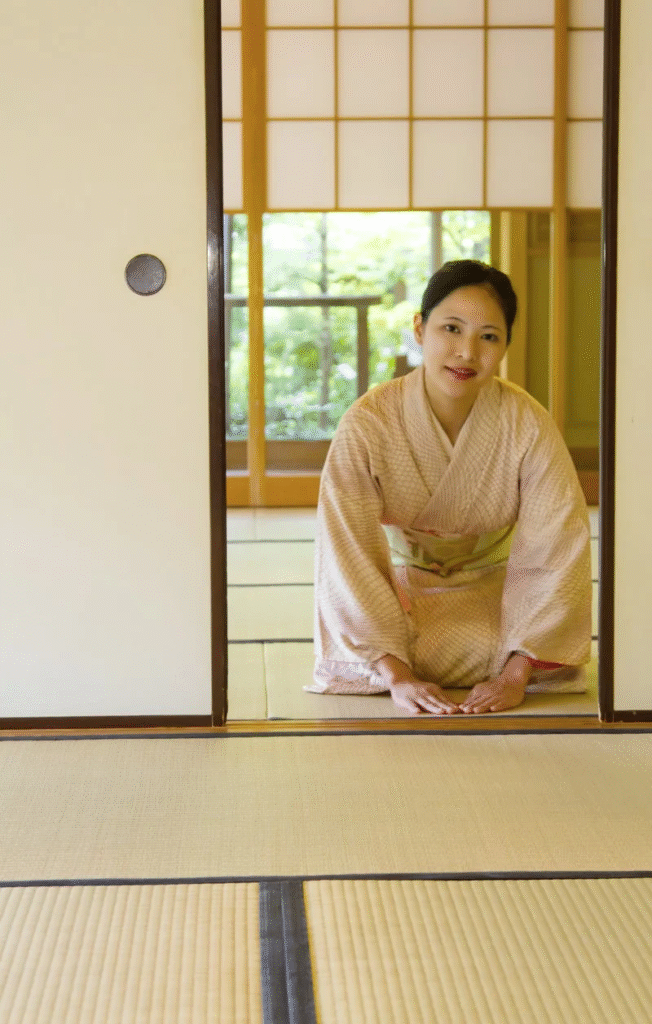
While English is spoken in many tourist spots, it’s not always guaranteed — especially at local shops, small restaurants, or in rural areas like around Mt. Fuji.
But don’t worry! Even just a few simple Japanese words can make a big difference.
Locals really appreciate when visitors make the effort to speak a little Japanese — and it often leads to warmer smiles and better experiences.
🗣️ Useful Japanese Phrases for Travelers
| English | Japanese | How to Say It |
|---|---|---|
| Hello | こんにちは (Konnichiwa) | kon-nee-chee-wah |
| Good morning | おはようございます (Ohayou gozaimasu) | oh-ha-yo go-zai-mass |
| Good evening | こんばんは (Konbanwa) | kon-bahn-wah |
| Thank you (polite) | ありがとうございます (Arigatou gozaimasu) | ah-ree-gah-toh go-zai-mass |
| Excuse me / Sorry | すみません (Sumimasen) | soo-mee-mah-sen |
| Yes / No | はい (Hai) / いいえ (Iie) | high / ee-eh |
| Water, please | お水ください (O-mizu kudasai) | oh-mee-zoo koo-dah-sai |
| Check, please (at restaurant) | お会計お願いします (O-kaikei onegaishimasu) | oh-kai-kay oh-neh-gai-shee-mass |
| What do you recommend? | おすすめは何ですか? (Osusume wa nan desu ka?) | oh-soo-soo-meh wah nan dess kah |
| I don’t understand | わかりません (Wakarimasen) | wah-kah-ree-mah-sen |
💡 Extra Tips for Communication
- If you’re not sure what to say, a friendly “Sumimasen” works for both excuse me and sorry!
- Pointing to the menu or showing pictures is totally normal and accepted.
- Many people will try to help you, even if they don’t speak much English — a smile goes a long way 😊
📲 Useful Apps for Translation
- Google Translate (with camera translation feature — super helpful for reading menus!)
- Yomiwa (for reading Japanese characters and text recognition)
- DeepL Translator (for more natural-sounding translations)
Even just a few words can open doors and make your Japan experience more enjoyable — and you might even make a local friend along the way!
(Planning a separate post on “Useful Japanese Phrases for Travelers” — stay tuned!)
🌿Slow Down and Enjoy Local Life (Beyond the Tourist Spots)
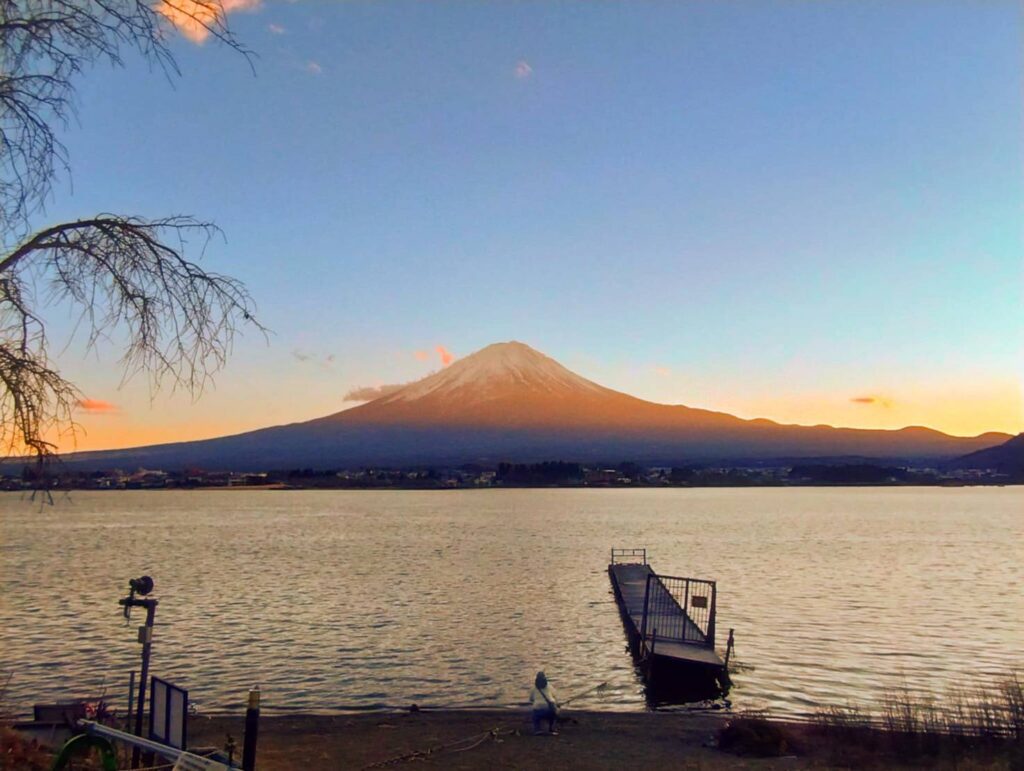
Japan is famous for its must-see sights like Tokyo, Kyoto, and Mount Fuji — but there’s so much more waiting beyond the crowded tourist paths.
One of the best ways to truly experience Japan is to slow down and take time to explore the quiet side of the country.
This is the heart of what I call “Slow Trip Japan.”
🏞️ Look Beyond the Famous Landmarks
- Instead of rushing from place to place, spend a little extra time in one area.
- Wander through small towns and villages.
- Visit local cafés, family-run restaurants, or morning markets.
- Try activities like camping, fishing, cycling, or hiking — especially around peaceful areas like Lake Kawaguchi and the Fuji Five Lakes.
💬 Connect with Local People
- Even if you don’t speak much Japanese, a smile and a simple “Konnichiwa” can lead to friendly exchanges.
- Many small business owners and locals are happy to share their recommendations if you show genuine interest.
- Joining local experiences like workshops, tea ceremonies, or seasonal festivals can give you a deeper understanding of Japanese life.
🧘♀️ Enjoy the Moment, Don’t Rush
- Japanese culture values mindfulness and appreciation of the present moment — from the way meals are enjoyed to how people admire cherry blossoms or autumn leaves.
- Take time to sit by a quiet lake, watch the changing colors of the seasons, or simply enjoy the silence of a countryside morning.
🌸 This Is the Spirit of Slow Trip Japan
At Slow Trip Japan, I believe that travel is not just about checking off a list of famous places —
it’s about truly feeling the spirit of the land and connecting with the people and culture in a meaningful way.
Slow down. Explore deeply.
Discover the Japan you won’t find in guidebooks.
🎉 Conclusion: Ready for Your Japan Trip?
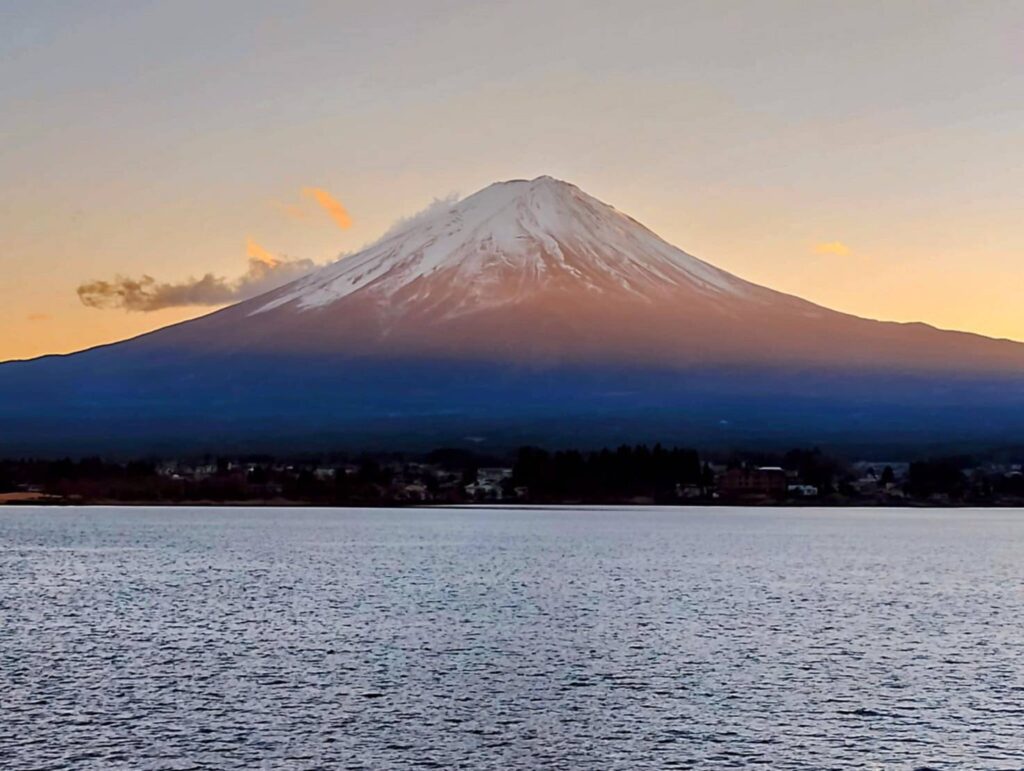
I hope these 10 essential Japan travel tips help you feel more prepared, confident, and excited for your journey!
Whether it’s your first time in Japan or your fifth, these tips will help you enjoy a smoother, more respectful, and richer experience.
➡️ If you’d like to learn more about Japanese etiquette, transportation, or what to eat — check out my other articles here:
🇯🇵 [“Mastering Japanese Etiquette: Essential Manners for Respectful Travelers”]
🚃 [“How to Use Public Transportation in Japan: A Simple Guide for First-Time Visitors”]
🍣 [ “What to Eat in Japan: A Beginner’s Guide to Must-Try Japanese Food” ]
Have a great trip — and enjoy your own Slow Journey through Japan!

